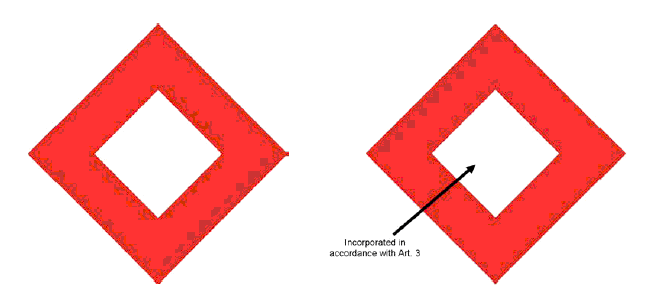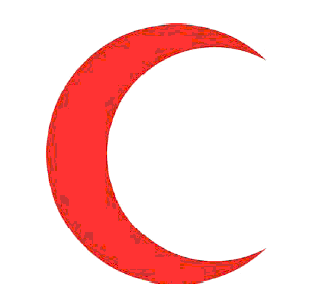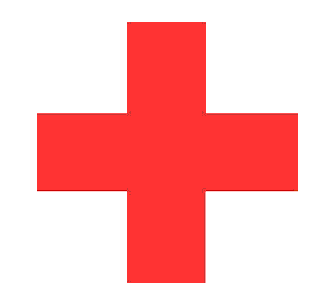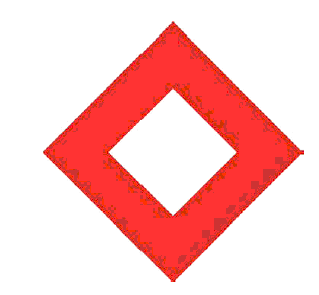7. The principal Act is amended by inserting, immediately after the Fourth Schedule, the following Schedules:Protocol Additional to the Geneva Conventions
of 12 August 1949, and Relating to the Adoption of
An additional Distinctive Emblem |
| The High Contracting Parties, |
| (PP1) Reaffirming the provisions of the Geneva Conventions of 12 August 1949 (in particular Articles 26, 38, 42 and 44 of the First Geneva Convention) and, where applicable, their Additional Protocols of 8 June 1977 (in particular Articles 18 and 38 of Additional Protocol I and Article 12 of Additional Protocol II), concerning the use of distinctive emblems, |
| (PP2) Desiring to supplement the aforementioned provisions so as to enhance their protective value and universal character, |
| (PP3) Noting that this Protocol is without prejudice to the recognized right of High Contracting Parties to continue to use the emblems they are using in conformity with their obligations under the Geneva Conventions and, where applicable, the Protocols additional thereto, |
| (PP4) Recalling that the obligation to respect persons and objects protected by the Geneva Conventions and the Protocols additional thereto derives from their protected status under international law and is not dependent on use of the distinctive emblems, signs or signals, |
| (PP5) Stressing that the distinctive emblems are not intended to have any religious, ethnic, racial, regional or political significance, |
| (PP6) Emphasizing the importance of ensuring full respect for the obligations relating to the distinctive emblems recognized in the Geneva Conventions, and, where applicable, the Protocols additional thereto, |
| (PP7) Recalling that Article 44 of the First Geneva Convention makes the distinction between the protective use and the indicative use of the distinctive emblems, |
| (PP8) Recalling further that National Societies undertaking activities on the territory of another State must ensure that the emblems they intend to use within the framework of such activities may be used in the country where the activity takes place and in the country or countries of transit, |
| (PP9) Recognizing the difficulties that certain States and National Societies may have with the use of the existing distinctive emblems, |
(PP10) Noting the determination of the International Committee of the Red Cross, the International Federation of Red Cross and Red Crescent Societies and the International Red Cross and Red Crescent Movement to retain their current names and emblems,| Have agreed on the following: |
|
| Respect for and scope of application of this Protocol |
| 1. The High Contracting Parties undertake to respect and to ensure respect for this Protocol in all circumstances. |
| 2. This Protocol reaffirms and supplements the provisions of the four Geneva Conventions of 12 August 1949 (“the Geneva Conventions”) and, where applicable, of their two Additional Protocols of 8 June 1977 (“the 1977 Additional Protocols”) relating to the distinctive emblems, namely the red cross, the red crescent and the red lion and sun, and shall apply in the same situations as those referred to in these provisions. |
|
| 1. This Protocol recognizes an additional distinctive emblem in addition to, and for the same purposes as, the distinctive emblems of the Geneva Conventions. The distinctive emblems shall enjoy equal status. |
| 2. This additional distinctive emblem, composed of a red frame in the shape of a square on edge on a white ground, shall conform to the illustration in the Annex to this Protocol. This distinctive emblem is referred to in this Protocol as the “third Protocol emblem”. |
| 3. The conditions for use of and respect for the third Protocol emblem are identical to those for the distinctive emblems established by the Geneva Conventions and, where applicable, the 1977 Additional Protocols. |
| 4. The medical services and religious personnel of armed forces of High Contracting Parties may, without prejudice to their current emblems, make temporary use of any distinctive emblem referred to in paragraph 1 of this Article where this may enhance protection. |
|
| Indicative use of the third Protocol emblem |
1. National Societies of those High Contracting Parties which decide to use the third Protocol emblem may, in using the emblem in conformity with relevant national legislation, choose to incorporate within it, for indicative purposes:| (a) | a distinctive emblem recognized by the Geneva Conventions or a combination of these emblems; or | | (b) | another emblem which has been in effective use by a High Contracting Party and was the subject of a communication to the other High Contracting Parties and the International Committee of the Red Cross through the depositary prior to the adoption of this Protocol. |
| Incorporation shall conform to the illustration in the Annex to this Protocol. |
|
| 2. A National Society which chooses to incorporate within the third Protocol emblem another emblem in accordance with paragraph 1 above, may, in conformity with national legislation, use the designation of that emblem and display it within its national territory. |
| 3. National Societies may, in accordance with national legislation and in exceptional circumstances and to facilitate their work, make temporary use of the distinctive emblem referred to in Article 2 of this Protocol. |
| 4. This Article does not affect the legal status of the distinctive emblems recognized in the Geneva Conventions and in this Protocol, nor does it affect the legal status of any particular emblem when incorporated for indicative purposes in accordance with paragraph 1 of this Article. |
|
International Committee of the Red Cross and
International Federation of Red Cross and Red Crescent Societies |
| The International Committee of the Red Cross and the International Federation of Red Cross and Red Crescent Societies, and their duly authorized personnel, may use, in exceptional circumstances and to facilitate their work, the distinctive emblem referred to in Article 2 of this Protocol. |
|
| Missions under United Nations auspices |
| The medical services and religious personnel participating in operations under the auspices of the United Nations may, with the agreement of participating States, use one of the distinctive emblems mentioned in Articles 1 and 2. |
|
| Prevention and repression of misuse |
| 1. The provisions of the Geneva Conventions and, where applicable, the 1977 Additional Protocols, governing prevention and repression of misuse of the distinctive emblems shall apply equally to the third Protocol emblem. In particular, the High Contracting Parties shall take measures necessary for the prevention and repression, at all times, of any misuse of the distinctive emblems mentioned in Articles 1 and 2 and their designations, including the perfidious use and the use of any sign or designation constituting an imitation thereof. |
| 2. Notwithstanding paragraph 1 above, High Contracting Parties may permit prior users of the third Protocol emblem, or of any sign constituting an imitation thereof, to continue such use, provided that the said use shall not be such as would appear, in time of armed conflict, to confer the protection of the Geneva Conventions and, where applicable, the 1977 Additional Protocols, and provided that the rights to such use were acquired before the adoption of this Protocol. |
|
| The High Contracting Parties undertake, in time of peace as in time of armed conflict, to disseminate this Protocol as widely as possible in their respective countries and, in particular, to include the study thereof in their programmes of military instruction and to encourage the study thereof by the civilian population, so that this instrument may become known to the armed forces and to the civilian population. |
|
| This Protocol shall be open for signature by the Parties to the Geneva Conventions on the day of its adoption and will remain open for a period of twelve months. |
|
| This Protocol shall be ratified as soon as possible. The instruments of ratification shall be deposited with the Swiss Federal Council, depositary of the Geneva Conventions and the 1977 Additional Protocols. |
|
| This Protocol shall be open for accession by any Party to the Geneva Conventions which has not signed it. The instruments of accession shall be deposited with the depositary. |
|
| 1. This Protocol shall enter into force six months after two instruments of ratification or accession have been deposited. |
| 2. For each Party to the Geneva Conventions thereafter ratifying or acceding to this Protocol, it shall enter into force six months after the deposit by such Party of its instrument of ratification or accession. |
|
| Treaty relations upon entry into force of this Protocol |
| 1. When the Parties to the Geneva Conventions are also Parties to this Protocol, the Conventions shall apply as supplemented by this Protocol. |
| 2. When one of the Parties to the conflict is not bound by this Protocol, the Parties to the Protocol shall remain bound by it in their mutual relations. They shall furthermore be bound by this Protocol in relation to each of the Parties which are not bound by it, if the latter accepts and applies the provisions thereof. |
|
| 1. Any High Contracting Party may propose amendments to this Protocol. The text of any proposed amendment shall be communicated to the depositary, which shall decide, after consultation with all the High Contracting Parties, the International Committee of the Red Cross and the International Federation of Red Cross and Red Crescent Societies, whether a conference should be convened to consider the proposed amendment. |
| 2. The depositary shall invite to that conference all the High Contracting Parties as well as the Parties to the Geneva Conventions, whether or not they are signatories of this Protocol. |
|
| 1. In case a High Contracting Party should denounce this Protocol, the denunciation shall only take effect one year after receipt of the instrument of denunciation. If, however, on the expiry of that year the denouncing Party is engaged in a situation of armed conflict or occupation, the denunciation shall not take effect before the end of the armed conflict or occupation. |
| 2. The denunciation shall be notified in writing to the depositary, which shall transmit it to all the High Contracting Parties. |
| 3. The denunciation shall have effect only in respect of the denouncing Party. |
| 4. Any denunciation under paragraph 1 shall not affect the obligations already incurred, by reason of the armed conflict or occupation, under this Protocol by such denouncing Party in respect of any act committed before this denunciation becomes effective. |
|
The depositary shall inform the High Contracting Parties as well as the Parties to the Geneva Conventions, whether or not they are signatories of this Protocol, of:| (a) | signatures affixed to this Protocol and the deposit of instruments of ratification and accession under Articles 8, 9 and 10; | | (b) | the date of entry into force of this Protocol under Article 11 within ten days of said entry into force; | | (c) | communications received under Article 13; | | (d) | denunciations under Article 14. |
|
|
| 1. After its entry into force, this Protocol shall be transmitted by the depositary to the Secretariat of the United Nations for registration and publication, in accordance with Article 102 of the Charter of the United Nations. |
| 2. The depositary shall also inform the Secretariat of the United Nations of all ratifications, accessions and denunciations received by it with respect to this Protocol. |
|
| The original of this Protocol, of which the Arabic, Chinese, English, French, Russian and Spanish texts are equally authentic, shall be deposited with the depositary, which shall transmit certified true copies thereof to all the Parties to the Geneva Conventions. |
|
Third Protocol Emblem
(Article 2, paragraph 2 and Article 3,
paragraph 1 of the Protocol) |
| Article 1 - Distinctive emblem |
| Article 2 - Indicative use of the third Protocol emblem |
|
| Distinctive Emblems of the Geneva Conventions |
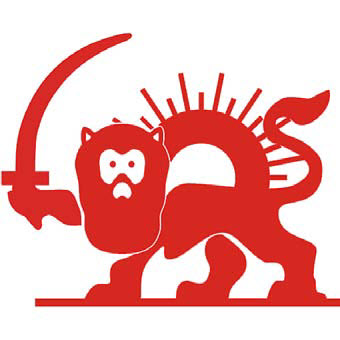 ”. ”. |
|
|
|


